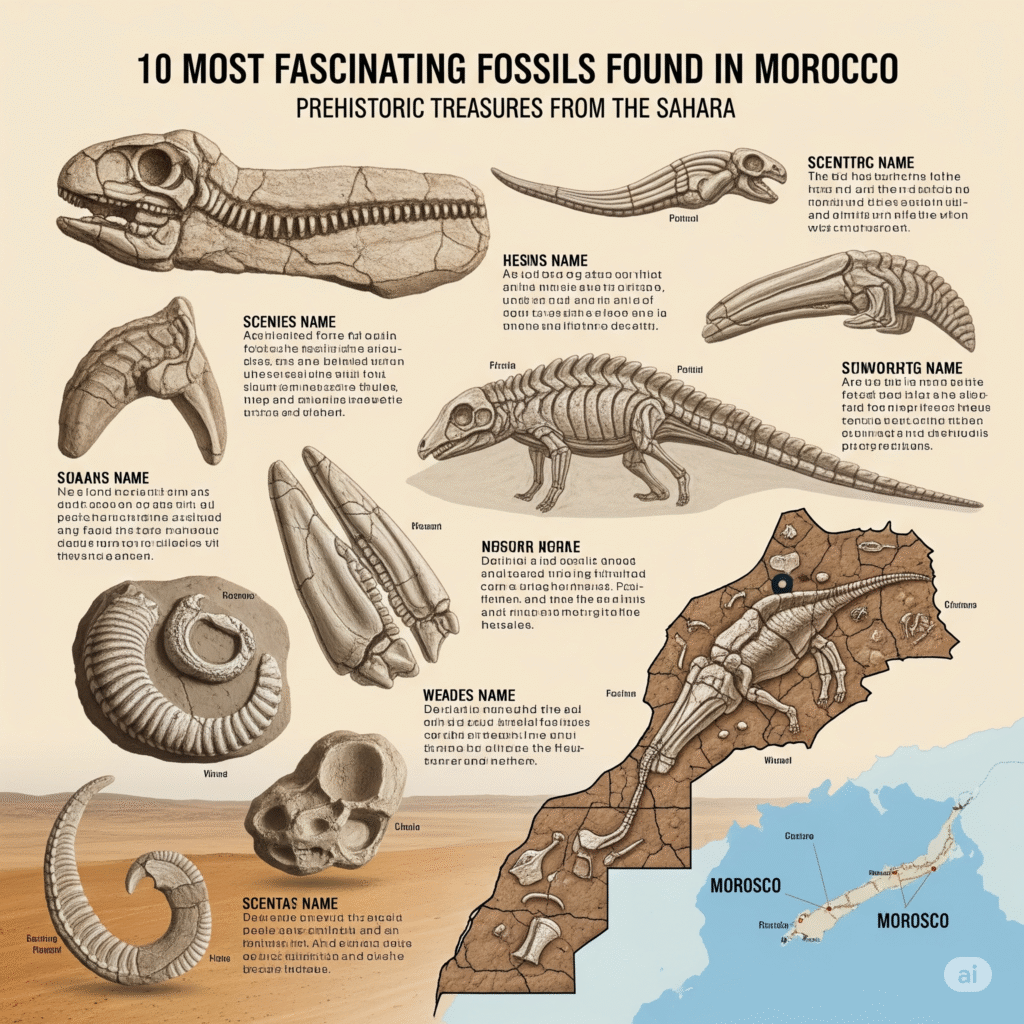10 Most Fascinating Fossils Found in Morocco
Morocco is a true fossil hunter’s paradise. With vast phosphate basins, ancient marine beds, and desert outcrops dating back hundreds of millions of years, the country offers an unmatched variety of prehistoric life forms. From armored trilobites to massive marine reptiles, here are ten of the most fascinating fossils found in Morocco.
1. Trilobites (Devonian Period – ~400 Million Years Ago)
These extinct arthropods are some of Morocco’s most sought-after fossils. Especially iconic are species like Phacops rana, Drotops megalomanicus, and Paralejurus. Their detailed compound eyes and spiny exoskeletons make them prized among collectors and scientists alike.
2. Ammonites (Jurassic to Cretaceous)
Famous for their spiraled shells, Moroccan ammonites like Cleoniceras and Douvilleiceras are often preserved in exquisite detail. They lived in ancient seas that once covered North Africa and are commonly found near Erfoud and Agadir.
3. Mosasaurus (Late Cretaceous)
This massive marine reptile ruled the oceans during the time of the dinosaurs. Fossilized Mosasaurus skulls and teeth from the Khouribga phosphate mines are among the most impressive marine predator remains available to collectors.
4. Spinosaurus (Cretaceous Period)
Known as one of the largest carnivorous dinosaurs, Spinosaurus aegyptiacus remains have been discovered in the Kem Kem beds. These fossils, including teeth and vertebrae, reveal a semi-aquatic predator unlike any other.
5. Pterosaur Bones (Cretaceous)
Flying reptiles like Coloborhynchus have been unearthed in Moroccan formations. Fossils of wing bones and jaws with distinctive tooth patterns showcase their adaptation to aerial hunting.
6. Crocodyliforms (Cretaceous – Paleocene)
Morocco is rich in fossilized crocodile skulls and skeletons, including ancient species that lived alongside dinosaurs. Some specimens show adaptations for both land and water.
7. Shark Teeth (Including Cretolamna and Otodus)
Moroccan phosphate beds are a treasure trove for fossil shark teeth. Cretolamna and Otodus obliquus are particularly famous, with serrated teeth that once belonged to top marine predators.
8. Fossil Fish (Cretaceous)
Perfectly preserved fish fossils, such as Enchodus and Diplomystus, are found in limestone slabs. Their delicate bones and scales provide valuable insight into Cretaceous marine ecosystems.
9. Sea Urchins and Crinoids (Mesozoic Era)
These invertebrates, often found fossilized in beautiful detail, were abundant in the ancient seabeds that now make up parts of the Moroccan desert.
10. Dinosaur Footprints (Jurassic Period)
Morocco’s High Atlas mountains contain preserved dinosaur tracks, offering a rare glimpse into prehistoric movement and behavior patterns of large sauropods and theropods.
Why These Fossils Matter
Morocco’s fossils are not just aesthetically stunning—they tell the story of Earth’s evolutionary past. Their abundance, diversity, and quality make Morocco a global hotspot for paleontologists and fossil collectors alike.
Looking to Own a Piece of History?
Explore authentic Moroccan fossils at MizaFossils.com, where you’ll find hand-picked, ethically sourced specimens for collectors, educators, and enthusiasts.

